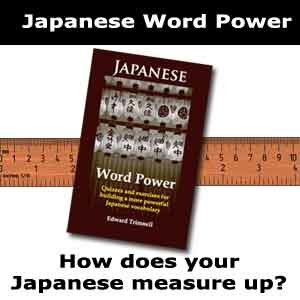
Departments
Intermediate Japanese - Free Online Course
Learning Japanese Through the News

Japanese Grammar Tutorials
Basic statements of identity
だ・です
da / desu
If you take a formal course in Japanese, you will learn that です / desu and だ / da (these are actually two versions of the same thing) are the copula. At this stage, however, you can think of these two items as the functional equivalent of the verb to be.
Before I go on, you would probably like to know what is this business about “two versions of the same thing?” In Japanese, most verbs can be expressed with multiple levels of politeness. Two of these levels are employed in common, everyday situations: the plain/dictionary form and the formal form (also called the –masu form). Both are equally grammatical; but the formal form is considered to be more “polite.”
Here are two basic statements of identity using the two forms of the copula:
Formal form
私は日本人です。
Watashi wa Nihonjin desu.
“I am a Japanese (person).”
Plain form
私は日本人だ。
Watashi wa Nihonjin da.
“I am a Japanese (person).”
Word order: If you examine the above sentences, you can probably notice something funky: the verb comes at the end of the sentence! Let’s take a closer look at one of these sentences, paying special attention to word order:
私は日本人です。
Watashi wa Nihonjin desu.
I-subject particle-Japanese person-am.
Pronunciation tip: The Romanization of ですdesu indicates that it is pronounced deh-su. However, the final “u” vowel sound is muted. A rough approximation would be dess, with the final “s” sound drawn out a bit.
じゃない・じゃありません
ja nai / ja arimasen
Were you telling the truth just now when you declared that you are a Japanese person? If so, then why are you studying basic Japanese?
Let’s set the record straight and state that you aren’t a Japanese person. (Once again, there is going to be a plain form and a formal form.)
Formal form
私は日本人じゃありません。
Watashi wa Nihonjin ja arimasen.
“I am not a Japanese (person).”
Plain form
私は日本人じゃない。
Watashi wa Nihonjin ja nai.
“I am a not Japanese (person).”
You have now learned the basic rule for making a negative statement:
A wa B ja arimasen.
or
A wa B ja nai.
= A is not B.
Remember that the ja arimasen form is the formal form, and that the ja nai form is the plain form.
